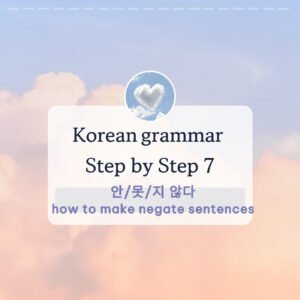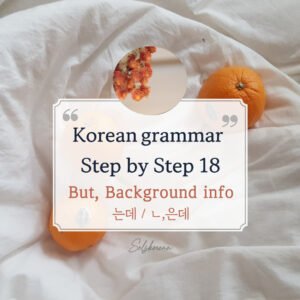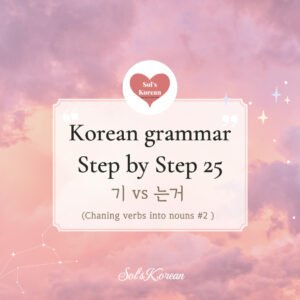Mastering the Korean Alphabet: Easy and Quick Memorization Techniques #1
Allow me to introduce an efficient and straightforward method for learning the Korean alphabet!
The Korean alphabet is called “Hangeul” and it’s made up of 19 consonants and 21 vowels.
How was it created?
Back in 1443, King Sejong the Great created Hangeul. Before that, people used Chinese characters because there wasn’t a native alphabet. But that made it tough for ordinary folks, who often struggled and faced unfair treatment. So King Sejong decided to make things simpler by inventing easy characters that everyone could learn. With Hangeul, literacy became accessible to all.
The consonants are shaped based on our vocal organs, while the vowels are inspired by the sky (•), land (ㅡ), and the human body (ㅣ).
Let’s learn the alphabet, Hanguel!
Vowels
In total, there are 21 vowels in Korean, consisting of ten basic vowels and 11 double vowels.
Vowels are written in a top-to-bottom, left-to-right format.
<Romanization pronunciation>
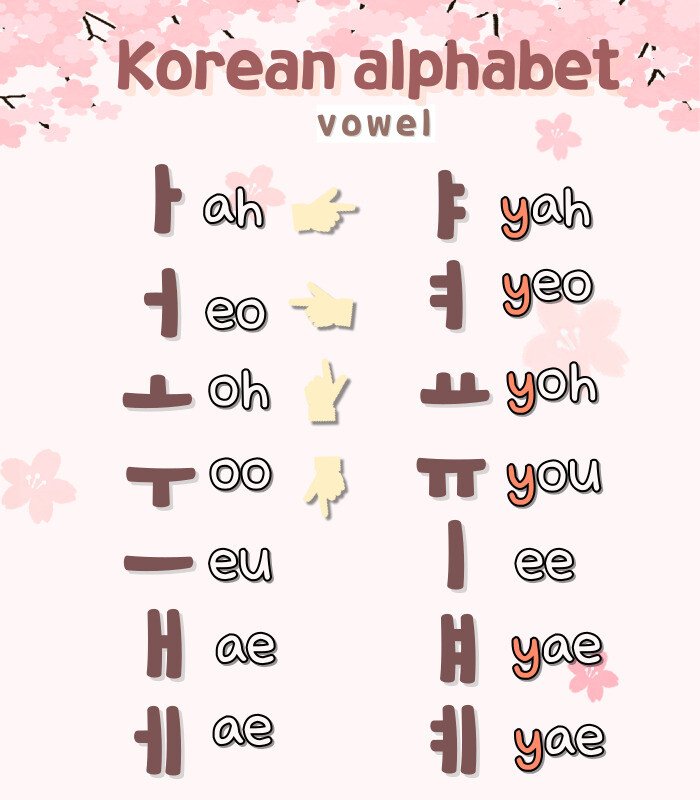


First, let’s take a look at ㅏ, which resembles a gesture pointing to the right.
This vowel is pronounced as ‘A/ah.’
When we add a stroke, it becomes ㅑ, and with this addition, the pronunciation changes to ‘Yah.’
It’s important to note that whenever we add a stroke, we also add the ‘Y’ sound in front.
When we’re talking about pointing up, ㅗ makes the sound ‘O‘ or ‘Oh.’
If we add a stroke to it, it becomes ㅛ, and we introduce the ‘Y’ sound, making it ‘Yo‘.
When we’re pointing down, ㅜ sounds like ‘oo‘ or ‘u.’
If we add a stroke to it, it becomes ㅠ, and we introduce the ‘yoo‘ or ‘you‘ sound.
When the stroke points to the left side, we have the vowel ㅓ (eo).
Pay close attention to this sound-it’s nestled between ㅏ (ah) and ㅗ (o).
To pronounce it correctly, shape your mouth as if you’re saying ‘ㅏ (ah)‘ and then try to say ‘ㅗ (o)‘.
Adding a stroke to ㅓ transforms it into ㅕ (yeo).
ㅡ can be tricky for English speakers. Try shaping your mouth like the vowel itself, ㅡ.
It’s often compared to the sound we make when something is disgusting-like ‘euuuuu’.
The vowel ‘l‘ is straightforward, sounding like ‘i‘ or ‘ee‘.
As for ㅔ/ㅐ, both vowels are pronounced as ‘ae‘. When you add another stroke ㅖ/ㅒ,
introducing the ‘y’ sound, it becomes ‘Yae‘.
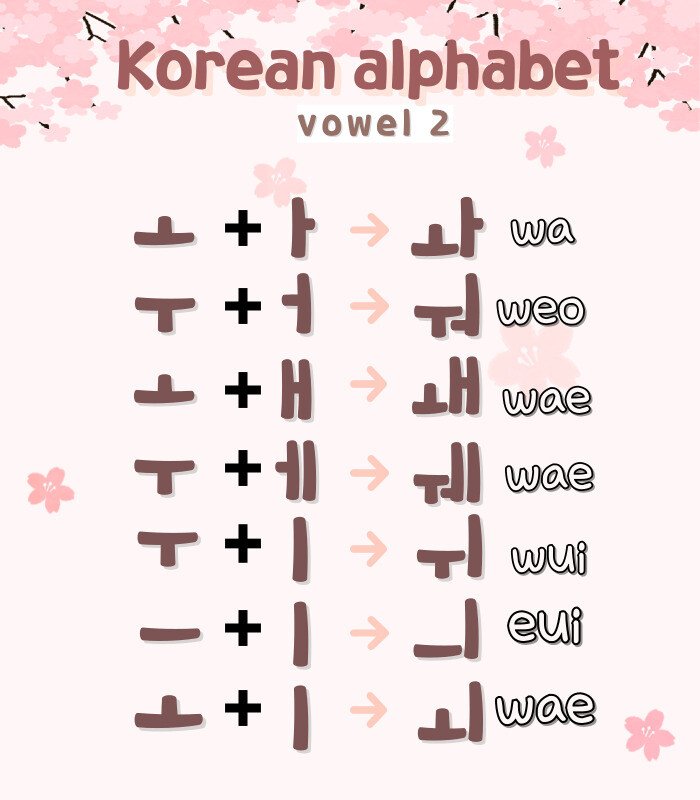

Now, let’s dive into double vowels.
Essentially, we pronounce the two vowels together, but very quickly, like one syllable!
For example, when we combine ㅗ (o) and ㅏ (a), we get the sound of ㅘ (woa).
ㅜ (oo) + ㅓ( eo) → ㅝ (Weo)
ㅗ (oh) + ㅐ (ae) → ㅙ(Wae)
ㅜ(oo) + ㅔ (ae) → ㅞ(Wae)
ㅜ (oo) + ㅣ(ee) → ㅟ(Wui)
ㅡ(euu) +ㅣ (ee) → ㅢ(Eui)
This applies to other double vowels as well, except for the last one, ㅚ.
This vowel shares the same pronunciation as ㅞ and ㅙ.
Some Koreans claim there’s a difference among these three vowels, but it’s subtle and hard to distinguish.
That’s all! Now we have learned all the vowels. To become familiar with pronunciation, listen repeatedly to recorded sounds and practice copying them.
Now, let’s take a quick look at how to write the Korean alphabet.

Firstly, when writing Korean, we always combine a consonant with a vowel.
There are three ways to write the Korean alphabet, as illustrated in the image:
- A consonant followed by a vertical vowel.
- A consonant followed by a horizontal vowel.
- A consonant followed by a vowel and then another consonant.
You cannot write a consonant or a vowel alone.
Secondly, for vowels such as ㅏ, ㅔ, ㅣ, and ㅑ that have a vertical line, they are placed to the left side of a consonant.
For vowels like ㅗ, ㅡ, ㅜ, ㅠ, and ㅛ that have a horizontal line, we write them beneath a consonant.
Consonants
Now, let’s move on to the consonants!
It’s going to be both easier and fun as we utilize our associations.
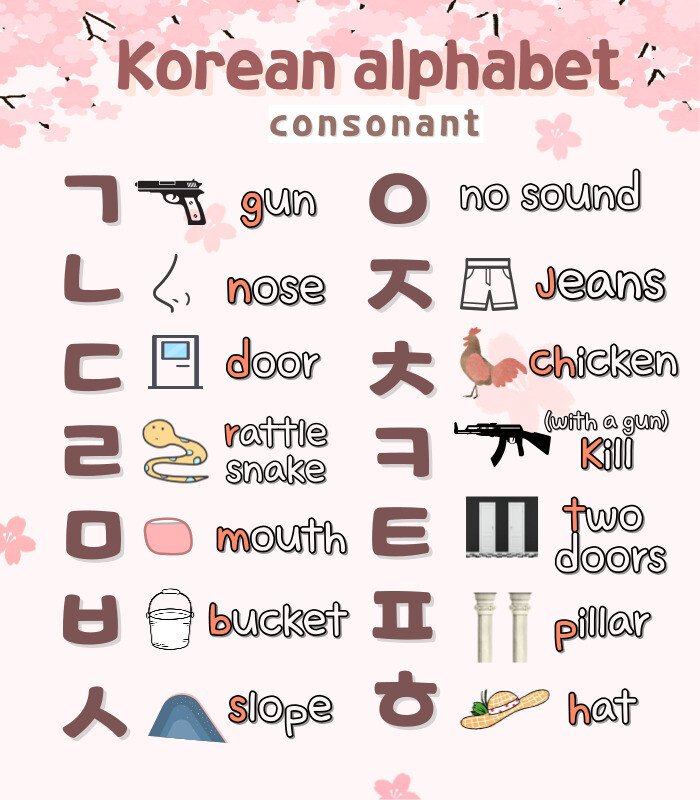
Starting with the first consonant, ㄱ. Doesn’t it resemble a gun? This makes the “g” sound.
Let’s combine it with the ㅏ vowel, making 가. 가 (Ga).
Now, let’s guess with these vowels: ㅓ, ㅗ, ㅜ, ㅡ, ㅐ, ㅣ.

The next consonant is “ㄴ”. This one looks like a nose, so we’ll associate this consonant with the “N” sound.
Now, let’s combine it with the vowels ㅑ, ㅕ, ㅛ, ㅠ, ㅡ, ㅖ, ㅣ. Try to guess first, then listen to the audio.

The next one is “ㄷ”. Doesn’t it look like a door? It makes the “D” sound.
Now, let’s guess with these vowels: ㅏ, ㅓ, ㅗ, ㅜ, ㅡ, ㅐ, ㅣ.

This “ㄹ” character resembles a snake, doesn’t it? Let’s nickname this consonant the “Rattlesnake.”
Although it represents the sound “R“, its actual pronunciation falls between “R” and “L.”
Often, it leans more towards the sound of “L” in pronunciation.
Let’s try combining this consonant with the following vowels: ㅑ, ㅓ, ㅜ, ㅔ, ㅟ, ㅡ,ㅣ!

The next one is “ㅁ”, which resembles a mouth, so it makes the “m” sound.
This one shouldn’t be too hard! Let’s try it with these vowels: ㅏ, ㅓ, ㅗ, ㅡ, ㅜ, ㅣ, ㅔ.

Let’s move on to the consonant “ㅂ”, which looks like a bucket!
So it will make the “B” sound.
Let’s try it with these vowels: ㅑ, ㅗ, ㅟ, ㅔ, ㅡ, ㅐ,ㅣ.

“ㅅ” resembles a slope or something standing upright, so it represents the “S” sound, but softly.
In English, there are two “S” sounds: one soft, like in “slope,” and the other stronger, like in “sun.”
This consonant is similar to the softer “S” sound.
Let’s try it with these vowels: ㅛ, ㅑ, ㅡ, ㅣ, ㅚ, ㅜ, ㅠ.

The circle “O” doesn’t have any sound on its own (though it does have a sound when it appears as a final consonant, which we’ll study next time!). So, just pronounce the vowel only.
Let’s try it with these vowels: ㅏ, ㅐ, ㅣ, ㅗ, ㅜ, ㅡ, ㅞ.

The next consonant is ㅈ, which we’ll associate with “Jeans,” representing the “J” sound.
Let’s try it with these vowels: ㅜ, ㅗ, ㅐ, ㅏ, ㅡ, ㅓ, ㅣ.

If you add one stroke on top of the prior consonant ㅈ, we get ㅊ. I like to think of it as a chicken,
although it might not look like one – haha! It makes the “Ch” sound.
Let’s try it with these vowels: ㅏ, ㅛ, ㅐ, ㅣ, ㅜ, ㅚ, ㅓ.

Almost there! The next one is “ㅋ“. As a variation of the first consonant, ㄱ, which we learned was a gun,
we’ll add a stroke in the middle. Now, imagine with a gun, as if we’re pulling the trigger… it “kills.”
It might seem a bit cruel, but this visual association can help it stick in your mind. So, it represents the “K” sound.
Try it with these vowels: ㅗ, ㅓ, ㅜ, ㅣ, ㅔ, ㅟ, ㅡ.

Here we have ㅌ. Remember the consonant “ㄷ”? It looks like “ㅌ”, there are two of them stacked vertically.
So, if “ㄷ” looks like a door, then having “two doors” stacked creates the ㅌ. Let’s remember it as “two doors”.. “T” sound. Haha!
Try it with these vowels: ㅜ, ㅓ, ㅑ, ㅟ, ㅚ, ㅐ, ㅡ.

Let’s take a look at this one, “ㅍ”, which resembles pillars, doesn’t it?
It’s like two pillars standing together. So, let’s remember it as a “pillar,” making the “p” sound.
Try it with these vowels: ㅏ, ㅣ, ㅡ, ㅔ, ㅠ, ㅓ, ㅟ.

Congratulations, we’ve reached the last one! It’s the “ㅎ” consonant, which looks like a person wearing a “hat“!
So, this one makes the “h” sound.
Let’s try it with these vowels! : ㅠ, ㅐ, ㅗ, ㅡ, ㅓ, ㅚ, ㅕ.

We’ve almost covered all the consonants and vowels!
Now, let’s embark on the final part of our alphabet journey: double consonants.
Remember these consonants: ㄱ, ㄷ, ㅂ, ㅅ, and ㅈ? Each one represents the sounds “g,” “d,” “b,” “s,” and “j” respectively.
What we’re going to do is write these consonants twice and pronounce them twice as hard too.
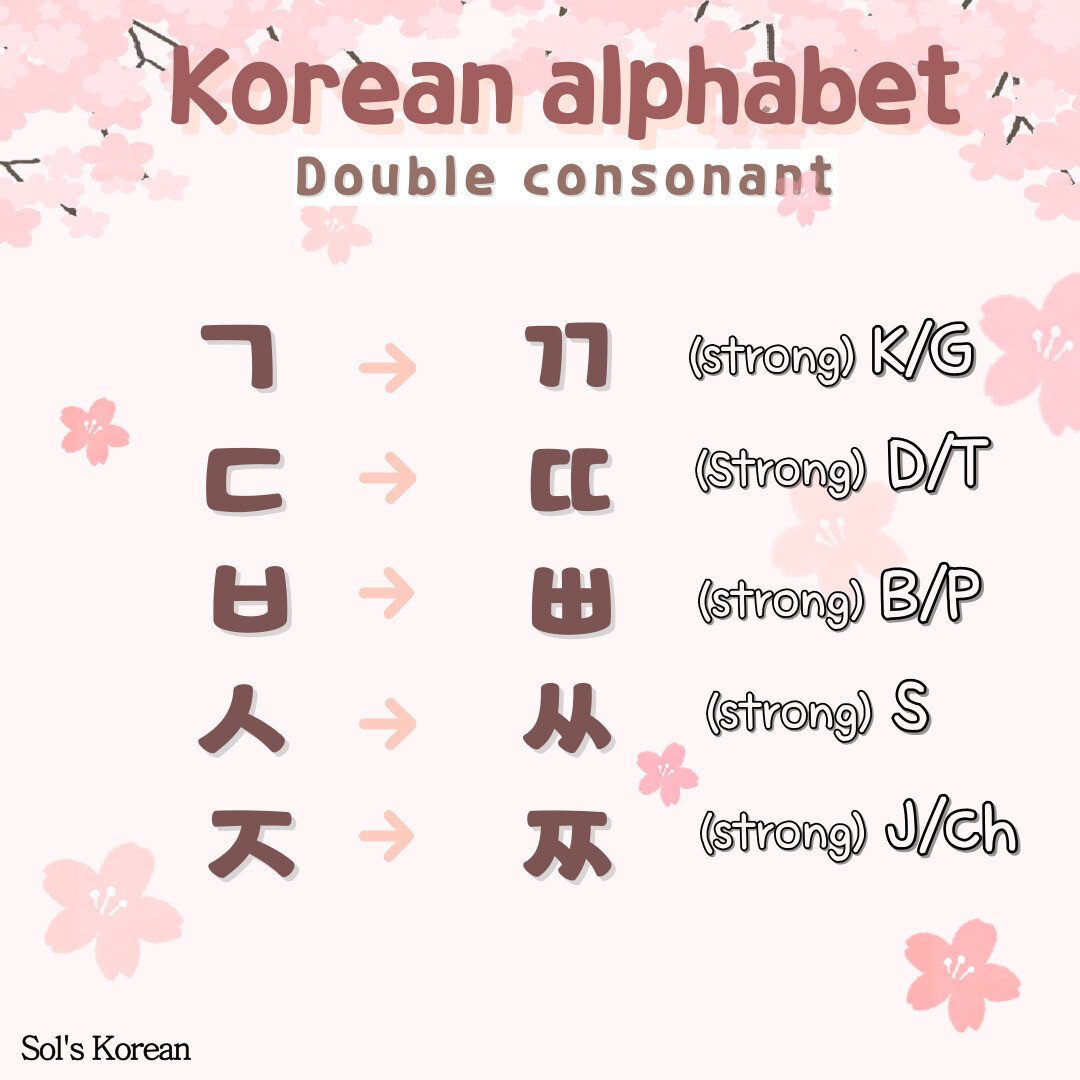
Check out the pronunciations!


Now, let’s practice how to pronounce Korean words together -!

Here, we have the combination of ㄱ + ㅐ. Remember? ㄱ (G, Gun) + ㅐ (ae) = 개 (Gae).

The consonant ‘ㅇ’ is silent, so we will only pronounce the vowels!
ㅜ (oo) + ㅠ (you) = 우유 (oo, you)

ㄴ( N, Nose) + ㅏ (ah) = 나(Nah)
ㅂ( B, bucket) + ㅣ (ee) = 비( Bee)

ㅅ ( S, Slope) + ㅏ (ah) = 사(Sah)
ㅈ ( J, Jeans ) + ㅏ (ah) = 자( Jah)

ㅇ ( Silent) + ㅏ (ah) = 아(Ah)
ㅍ ( P, Pillar ) + ㅏ (ah) = 파( pah)
ㅌ ( T, Two doors) + ㅡ (euuu) = 트(Teuu)

ㄴ ( N, Nose ) + ㅗ (oh) = 노(Noh)
ㄹ ( R, Rattlesnake ) + ㅐ (ae) = 래(Rae)

ㅅ ( S, Slope ) + ㅗ (oh) = 소(Soh)
ㅍ ( P, Pillar ) + ㅏ (ah) = 파(Pah)

ㅅ ( S, Slope ) + ㅏ (ah) = 사(Sah)
ㄱ ( G, Gun ) + ㅘ (oh + ah = Wah) = 과(Gwa)

ㄱ ( G, Gun ) + ㅘ (oh + ah = Wah) = 과(Gwa)
ㅈ ( J, Jeans ) + ㅏ (ah) = 자(Jah)


